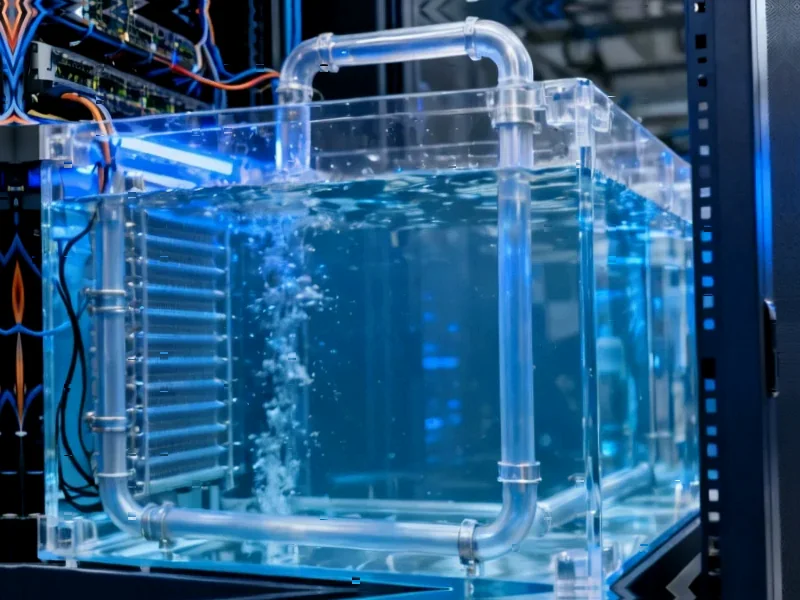According to CRN, Cisco has unveiled its Unified Edge platform at Cisco Partner Summit 2025, an integrated compute system designed to bring data center-level AI processing power to network edges where real-time applications and AI inferencing data are generated. The platform combines compute, networking, storage and security in a single modular system that supports third-party vendors including Nutanix, VMware, and Microsoft, with order availability starting now and shipping scheduled for December. Senior executives including Jeremy Foster, SVP of Cisco Compute, emphasized that the platform addresses the growing need for edge infrastructure that can handle AI workloads while providing data center-level redundancy for the next decade. The announcement comes as Cisco projects that by 2027, 75 percent of enterprise data will be created and processed at the edge, highlighting the strategic importance of this market shift.
The Inevitable Edge Computing Revolution
What Cisco is recognizing—and what the industry has been slowly converging toward—is that the centralized AI model is fundamentally incompatible with real-world applications. The physics of data movement create unavoidable latency that makes real-time AI impossible when data must travel hundreds or thousands of miles to centralized data centers. For applications like medical imaging analysis, industrial robotics, or retail computer vision, even milliseconds of delay can render AI systems useless or dangerous. The edge computing market has been building toward this moment for years, but AI workloads are finally providing the compelling use cases that justify the infrastructure investment.
Solving the AI Infrastructure Bottleneck
The most significant barrier to enterprise AI adoption isn’t model sophistication or algorithm development—it’s infrastructure. Most organizations built their IT environments for a different era, optimized for centralized processing and predictable workloads. AI changes everything: it demands massive parallel processing, specialized hardware like GPUs, and low-latency connectivity that traditional infrastructure simply can’t provide. Cisco’s approach of packaging this capability into a unified platform addresses the operational complexity that has stalled many edge computing initiatives. By integrating management through Cisco Intersight, they’re attempting to solve the “remote site IT staff” problem that has plagued distributed computing for decades.
Industry Transformation Beyond Technology
This shift toward edge AI processing will transform entire industries in ways that extend far beyond technology. Manufacturing facilities can implement real-time quality control systems that detect defects as they occur, rather than after batches are completed. Retailers can deploy sophisticated customer behavior analysis without privacy concerns of streaming video to the cloud. Healthcare providers can process medical imaging at the point of care, enabling immediate diagnostic support. The business models themselves will evolve—we’ll see the emergence of “AI-as-a-service” offerings specifically designed for edge deployment, where the value proposition isn’t just the AI capability but the entire operational framework.
Strategic Implications for the Next Decade
Cisco’s 10-year infrastructure promise reveals their understanding that edge computing represents a fundamental architectural shift, not a temporary trend. Organizations making edge investments today are essentially placing bets on their operational technology strategy for the next business cycle. The companies that master edge AI deployment will gain significant competitive advantages in efficiency, customer experience, and innovation velocity. However, this transition also introduces new challenges around edge security, data governance, and skills development that many organizations are unprepared to address. The success of platforms like Unified Edge will depend as much on their ecosystem partnerships and support capabilities as their technical specifications.
The Coming Edge Computing Arms Race
While Cisco is making an early move, they won’t have the edge computing market to themselves. We’re likely to see intensified competition from cloud providers extending their services to the edge, specialized hardware manufacturers, and even telecommunications companies leveraging their distributed infrastructure. The winners will be those who can deliver not just the hardware, but the complete operational framework that makes edge AI manageable at scale. Over the next 12-24 months, expect to see consolidation in this space as larger players acquire specialized edge capabilities and the market separates between platform providers and point solution vendors.




